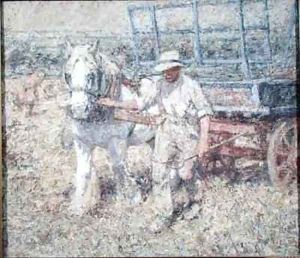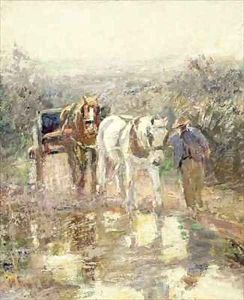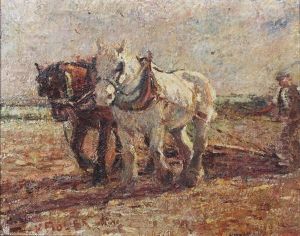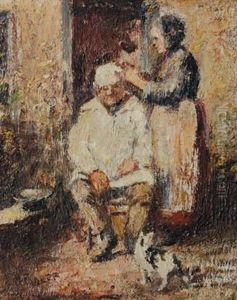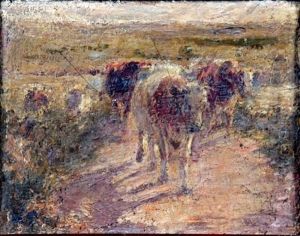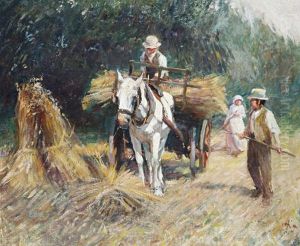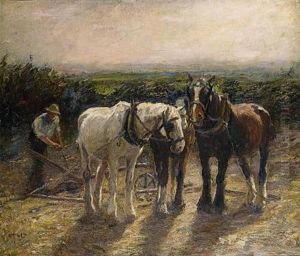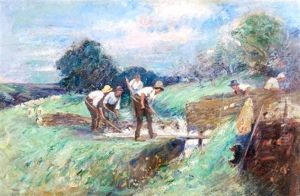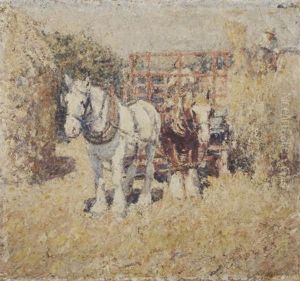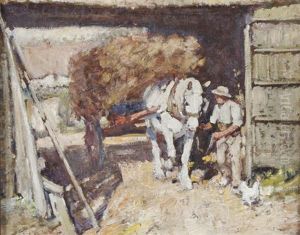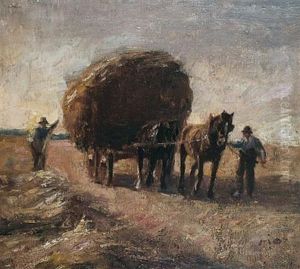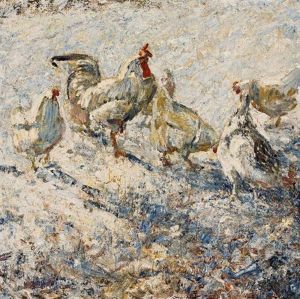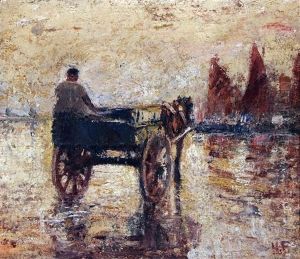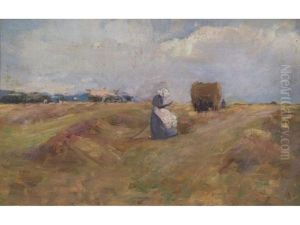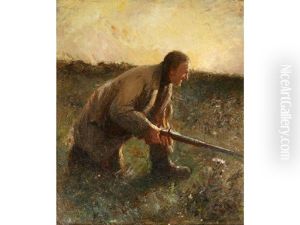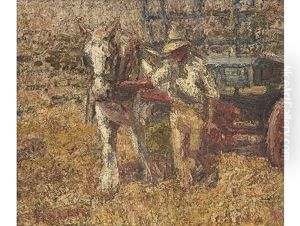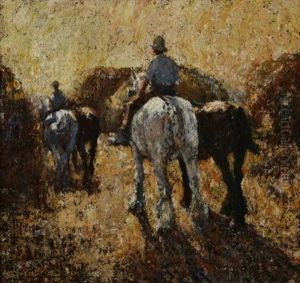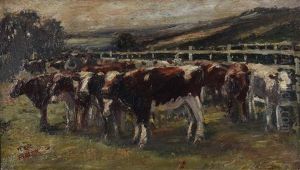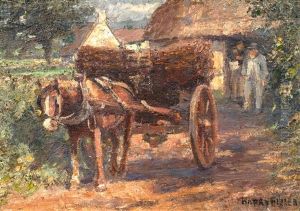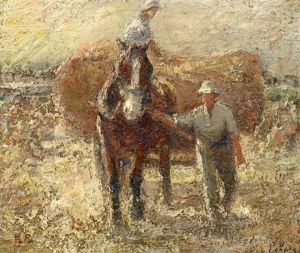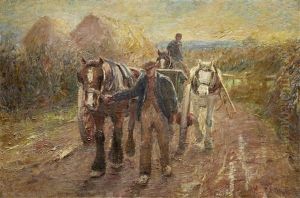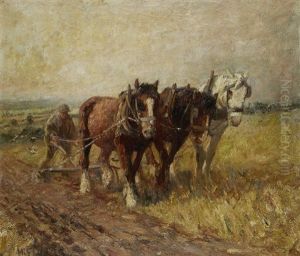Harry Fidler Paintings
Harry Fidler was an English painter known for his distinctive work featuring farmyard scenes and animals, particularly horses at work. Born on August 7, 1856, in Gillingham, Dorset, Fidler developed an interest in art at a young age. He pursued his education in the arts at the Royal College of Art in London and later at the Académie Julian in Paris, which was one of the foremost art institutions of the time and attracted students from across the world.
Fidler's style was characterized by his use of impasto, a technique that involves applying paint thickly so that brush or palette knife marks are visible. This technique gave his work a textural quality that made the subjects—often the horses and the rural landscapes they inhabited—come to life with a sense of vigor and robustness.
His career saw him exhibiting at prominent art institutions, including the Royal Academy and the Royal Society of British Artists. Fidler was also a member of the Royal Institute of Oil Painters and the Royal West of England Academy. His work was well-received, and he gained a reputation for his realistic portrayal of English rural life at the turn of the 20th century.
Harry Fidler's paintings are now considered to reflect an important period in British art, where the focus was often on the depiction of the bucolic countryside and the people and animals that lived within it. His paintings not only capture the daily life of the rural worker but also the changing agricultural landscape at a time when the traditional ways were beginning to give way to modernization.
Fidler's contribution to British art was cut short when he passed away on February 28, 1935. Despite this, his work continues to be appreciated for its unique style and for the historical insight it provides into rural English life. His paintings can be found in various art galleries and collections in the United Kingdom and around the world.

